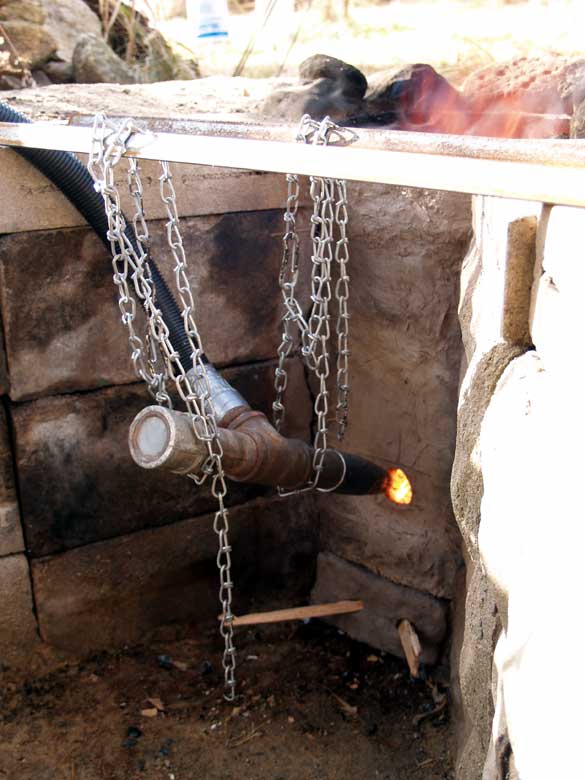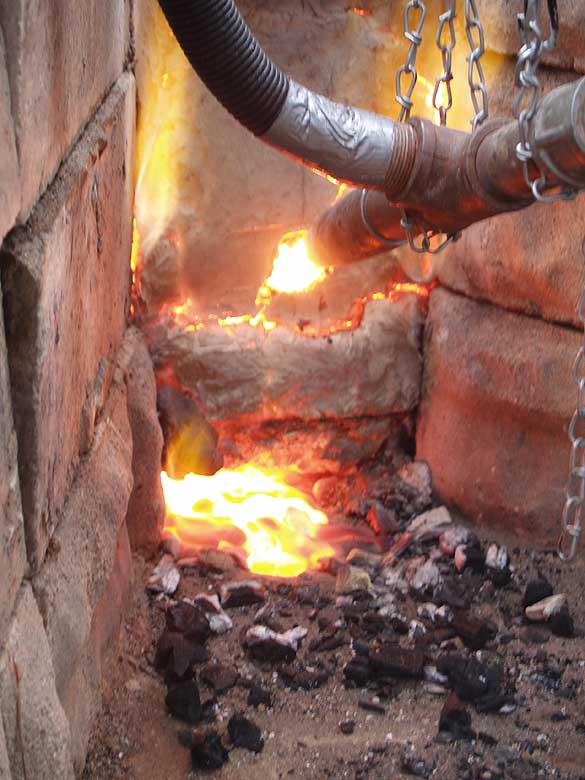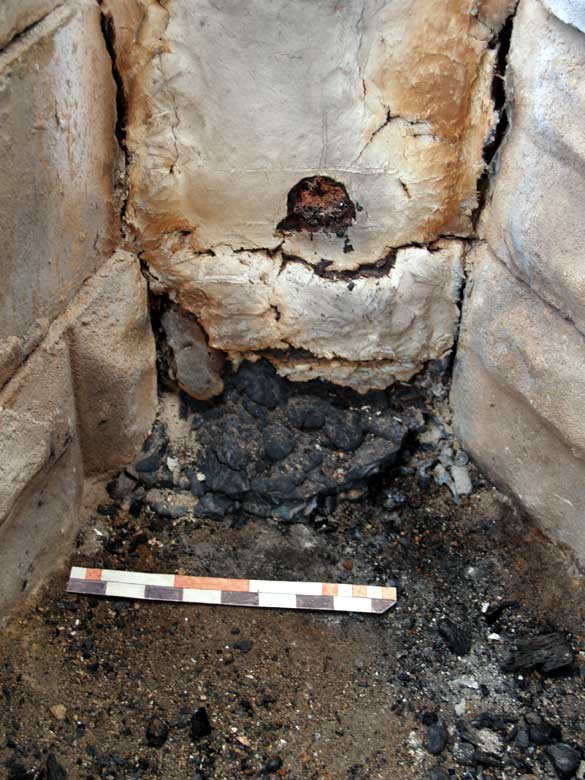Icelandic Test Smelt Four
Bellows Plate & Blow Hole
November 8, 2008
On Saturday November 8 2008, a small band gathered for the normal Fall DARC
smelt. This was number four in the main sequence of our Icelandic / Hals series.
Building on the work from the October (Thanksgiving) smelt, this experiment
focused primarily on the use of the bellows plate and blow hole combination.
Ken Cook served as Smelt Master, with Neil Peterson assisting. (And Darrell
constantly sticking his nose in to keep things on track.)
The overall shape of the work area was within the rough dimensions of the Halls
prototype, the same framework that had been built for the Spring smelt (Icelandic
3). A new clay furnace was constructed, with an inset front plate 24 cm tall
and 18 cm wide. The blow hole was roughly 1/3 from the bottom edge, putting
it about 20 cm from the furnace base. One other major difference from the Icelandic
3 experiment was the use of air delivered to the tuyere system via a pipe. This
meant that the tuyere itself could be suspended from above. This set up removed the large bellows frame out of the frontal slot in the furnace block,
making it much easier to manipulate the tuyere and the developing slag bowl.
| Experiment Outline :
Smelter Size : roughly 27 cm diameter x 65 cm tall
Tuyere : bellows plate and blow hole @ 5 cm / gap at 2.5 inches
Total Fuel : 48 kg
Total Time : 5 hours (plus 2:40 preheat)
Total Ore : 23 kg (mixed poor Virginia Rock / Hematite grit @ 8.4 / 15.4
kg)
Total Bloom : 4.25 kg
Total Yield : 18 %
Average Burn Cycle : 12 minutes per standard 2 kg bucket
Go on for the Sequence |
 |
| About 3 1/2 hours into the main sequence, the smelter starts to self tap.
|
 |
As with the Thanksgiving smelt (which also used the plate / hole) there was
a choke point at roughly 2 1/2 hours into the ore charging / about 7 kg. The
developing slag bowl threatened to drown the air intake. On this attempt we
were better able to control this, and the smelter would settle down once the
slag evolved from the early green silica type to the later black iron rich type.
The bloom was less consolidated on extration than what is seen from a smelter
with an insert tuyere - more of a 'lumpy' texture. It also was positioned a
bit futher back from the air inlet than expected, and had a marked crescent
shape. Both this condition of the bloom. and the relativly low yield (at 18
%) was expected from other observations of the blow hole air method.
|
|
|
Overview of the working area after the smelt.
Note the distribution of charcoal and slag fragments. |
Front of the smelter the next day.
Note the thick ropes of slag off the front of the slag mass. |
Showing the interior and the conditions of the furnace
walls.
Except for the congealled slag mass, the furnace was in good condition.
|
Text and photography ©
1998 - 2007, Darrell Markewitz




